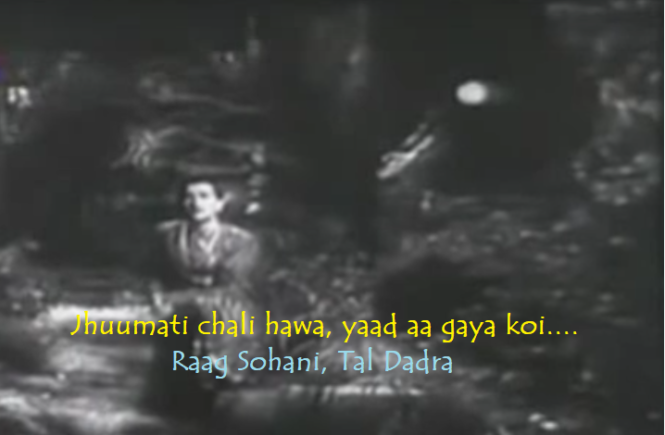Raaga Based Song of the Day: Jhoomati chali hawa, yaad aa gaya koi….
Raag Sohani, Tal Dadra
Ladies and gentlemen, please forgive me for being off the series for about ten days. I wasn’t feeling like it and there is no other excuse. Anyway, here I am now; back with you with the next one in the series.
This is the second time I am giving you a song based on Raag Sohani. The first time it was, if you recall, a treat to listen to Ustaad Bade Ghulam Ali Khan singing something that Shakeel Badayuni and Naushad Ali put together for K Asif’s magnum opus Mughal-e-Azam: Prem jogan ban ke. It was in Tal Dipchandi (Please see: ‘Raaga Based Song Of The Day #42‘). Naturally, nothing could have been better than that.
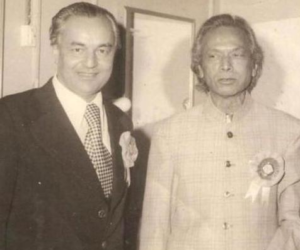
Today’s song has been sung by Mukesh. Yesterday, when I gave in ‘Songs That Tug At Your Emotions – Song #5‘ his Guzra zamaana bachpan ka, I brought out that from the very first song that he sang, ie, Dil jalta hai to jalne de, he tried to imitate KL Saigal. It was left to Naushad to hone his own unique style of singing, which he initiated in Mehboob Khan’s 1949 movie Andaz, in which he sang for Dilip Kumar two very fine songs: Tu kahe agar jeevan bhar main geet sunaata jaayun, and Jhuum jhuum kar naacho aaj. There was no looking back after that. This is from the 1962 movie Sangeet Samrat Tansen that was directed by the music director SN Tripathi. Naturally, by this time, Mukesh had not only a unique voice but also had made quite a name for himself.
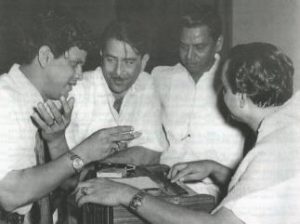
The lyricist Shailendra has been called by me as lyricist beyond compare (Please see: ‘The Best Songs Of Shailendra, The Lyricist Beyond Compare – Part I‘ and ‘Part II‘). Unlike almost all poets turned lyricists of that era, Shailendra was solely a lyricist; lyrics were his life and he put his life and soul into it. His lyrics always made you think, frequently with their deeper meaning. Take the present song itself. Try to imagine what he means by: Chandini ki ote se muskura gaya koi. Only my favourite lyricist Shakeel Badayuni has that kind of imagination; eg, Tere saaye ko samajh kar main haseen Taj Mahal, chandini raat mein nazaron se tujhe pyaar karun. It is not surprising at all that the first five years of Filmfare Awards for Best Lyricist, from the year 1958 to 1962, went to both of them, with the first two going to Shailendra for: Yeh mera deewanapan hai, and Sab kuchh seekha hamane.
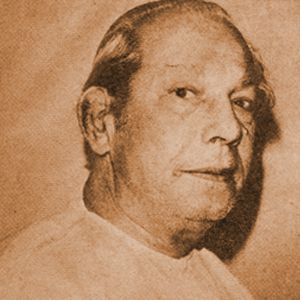
Music Director SN Tripathi (Shri Nath Tripathi) was also the Director of this 1962 movie. He started his career in 1935 by being a violinist assisting Saraswati Devi in Bombay Talkies. In 1942, he became a full-fledged music director. I remember him best for two of his songs that influenced me hugely during my boyhood: Zara saamne to aa o chhaliye and Aa laut ke aaja mere meet. I also remember him fondly for his two Mohammad Rafi sung ghazals that he composed for the 1960 Nanabhai Bhatt movie Lal Quila: Lagta nahin hai dil mera ujade dayaar mein (penned by the last Mughal Emperor: Bahadur Shah Zafar) and Na kisi ki aankh ka noor hoon (penned by Muztar Khairabadi).
We have completed eighty-two days of Raaga Based Songs of the Day. Our first post in the series was titled ‘Raaga Based Song Of The Day #1’ and the song was a Mohammad Rafi and Lata Mangeshkar song from the 1970 Shakti Samanta movie Pagla Kahin Ka: Tum mujhe youn bhula na paoge. It is in Raag Jhinjhoti, Tal Kaherava.
Our eighty-third post or the last post was titled ‘Raaga Based Song Of The Day #83‘ and the song was a Mohammad Rafi song from the 1965 Amar Kumar movie Mere Sanam starring Biswajeet, Asha Parekh and Pran: Tukade hain mere dil ke ai yaar tere aansu. It is in Raag Pahadi, Tal Kaherava.
This blog has a number of posts on Raaga based songs in Hindi movies titled similarly; for example: ‘The Best Raaga Based Songs in Hindi Movies – Raaga Jhinjhoti – Part I‘.
In the last eighty-three days of sharing Raaga based songs of the day, I have given you songs based on Raag Jhinjhoti, Gara, Bhimpalasi, Madhuvanti, Shivaranjani, Bihag, Pahadi, Sarang, Pilu, Bhairavi, Khammaj, Charukesi, Kalyan or Yaman, Desh, Malgunji, Kirwani, Kedar, Bageshri, Megh Malhar, Bhupali, Ahir Bhairav, Malkaush, Mand, Adana, Kafi, Rageshri, Jaunpuri, Tilang, Janasammohini, Chayanat, Shuddha Kalyan, Gaur Sarang, Jogiya, Asavari, Maru Bihag, Durga, Lalit, Puria Dhanashri, Bhinna Sahdja, Sohani, Multani, Patdeep, Jaijaiwanti, Tilak Kamod, Hemant, Basant Mukhari, Gujri Todi, Kalavati, Hamir, Bhatiyar, Gawati, Shyam Kalyan, Gorakh Kalyan, Madhamat Sarang, Manj Khammaj, Darbari Kanada, Vibhas, Shankara, Bahar, Nand and Mian Ki Malhar; making it a total of 61 raagas. The raagas that have been repeated so far are Pahadi, the raaga of my home place in the Himalayas, Maru Bihag, Raag Kirwani, Jhinjhoti, Bhairavi, Gara, Basant Mukhari, Malkauns, Bhairavi and Mand. Today, I am repeating Raag Sohani for the second time.
Today’s song has been sung by Mukesh on the lyrics of Shailendra and composition by SN Tripathi. As I said, it is in Raag Sohani, Tal Dadra. The song is picturised on Bharat Bhushan in the title role of Tansen missing his childhood love Hansa (Anita Guha) in the 1962 SN Tripathi movie Sangeet Samrat Tansen.
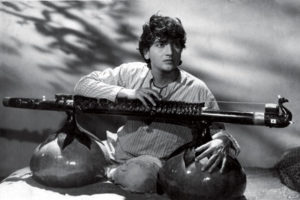
Lets take up Bharat Bhushan, the actor, screen-writer and producer. He was best known for the portrayal of Baiju Bawra in the 1952 Vijay Bhatt movie by the same name. The first Filmfare Award for Best Actor was instituted in 1954 and Dilip Kumar got it for the 1952 movie Daag over his Baiju Bawra. However, he received the second such award for Chaitanya Mahaprabhu. Indeed, he was considered best suited for portrayal of historical and mythological characters in the Hindi movies. Such was his acting prowess that in the 1960s, he and Dev Anand (one each) were the only actors other than Dilip Kumar who won the awards; though Raj Kapoor too was nominated twice.
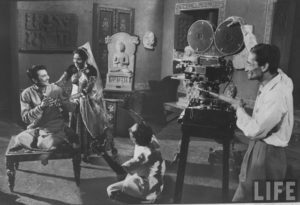
Lets get to the movie: Sangeet Samrat Tansen. As I said, this 1962 SN Tripathi movie starred Bharat Bhushan in the title role and Anita Guha as his beloved Hansa. SN Tripathi along with directing the film also gave the music direction. The lyrics were by Shailendra and Swami Haridas who is the author of “Sapta Suran Teen Gram” sung in Raaga Yaman Kalyan (or Adbhut Kalyan). Some of the Raaga-based songs: The song “Raag Bhairav Pratham Shant Ras” shows the completion of Tansen’s training by Haridas by his singing the raagmala, “Deepak Jalao Jyoti Jagao” in Raaga Dipak and “traditionally associated with fire”, “Badli Badli Duniya Hai Meri” in Raag Jhinjhoti sung by Lata Mangeshkar and Mahendra Kapoor, and “Jhoomti Chali Hawaa” in Raaga Sohni sung by Mukesh.
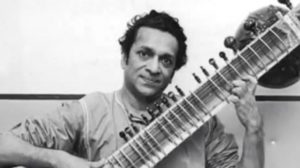 Before we actually take up the song, first, lets take up the value added learning of today. From the last three-times onwards we started learning about some of the leading personalities in Indian Classical Music or Shastriya Sangeet. The first one that we took up was Ustaad Asad Ali Khan, the finest Rudra Veena player in the country. Then we took up Pandit Hari Parsad Chaurasia, the greatest Bansuri player in the country. Then we talked about Ali Akbar Khan, the greatest Sarod player in the country. Tonight, we shall take up Pandit Ravi Shankar, the greatest Sitar player in the world.
Before we actually take up the song, first, lets take up the value added learning of today. From the last three-times onwards we started learning about some of the leading personalities in Indian Classical Music or Shastriya Sangeet. The first one that we took up was Ustaad Asad Ali Khan, the finest Rudra Veena player in the country. Then we took up Pandit Hari Parsad Chaurasia, the greatest Bansuri player in the country. Then we talked about Ali Akbar Khan, the greatest Sarod player in the country. Tonight, we shall take up Pandit Ravi Shankar, the greatest Sitar player in the world.
You would recall I told you about Sitar when I was covering Hindustani Musical instruments (Please see ‘Raaga Based Song Of The Day #53‘). Ravi Shankar was born on 07 Apr 1920 in Benares (UP) to a Bengali family, the youngest of seven brothers. He spent his youth touring India and Europe with the dance troupe of his brother Uday Shankar. It is only in 1938 that he took up learning Sitar from Ustaad Allauddin Khan. After finishing his studies in 1944, Shankar worked as a composer, creating the music for the Apu Trilogy by Satyajit Ray, and was music director of All India Radio, New Delhi, from 1949 to 1956. In 1956 he began to tour Europe and the Americas playing Indian classical music and increased its popularity there in the 1960s through teaching, performance, and his association with violinist Yehudi Menuhin and Beatles guitarist George Harrison. His influence on the latter helped popularize the use of Indian instruments in pop music throughout the 1960s.
Pandit Ravi Shankar was honoured with the highest award by the government of India: Bharat Ratna in 1999. He is also the recipient of Padma Bhushan (1967) and Padma Vibhushan (1981) (the third and second highest awards in India).
He is also recipient of several awards on the global stage such as Ramon Magsaysay Award (1992), Honorary Knight Commander of the Order of the British Empire (KBE) (2001), and five Grammy Awards.
As far as Hindi movies are concerned, he composed songs of three movies and also directed the music: Anuradha (1960) (Songs such as Kaise din beete kaisi beeti ratiyan, Saanvre saanvre, Jaane kaise sapno mein kho gayi akhiyan, and Haay re woh din kyun na aayen), Godaan (1963) (Songs such as Hiya jarat rahat din rain and Chali aaj gori piya ki nagariya) and Meera (1979) (Karuna suno shyam mori).
As I said, today’s song is in Raag Sohani, Tal Dadra.
Sohani, also known as Sohni and Sohini, is a raaga that belongs to Marwa Thaat. Its Jati is Audhav – Shadav, ie, five notes in Aaroha and six in Avroha. The time for performing this raaga is in the wee hours of the morning or last prahar of the night, that is, from 3 to 6 AM. In the Marwa thaat, Sohani is similar to Marwa and Puria raagas. In the Poorvi thaat, it is similar to Basant.
In the wee hours of the morning, you would find the atmosphere of dew. Hence, the mood of the raaga is the moist atmosphere that prevails in a tranquil and silent night.
Some of the other songs composed in Raag Sohani are:
| 1. 2. 3. 4. 5. 6. 7. 8. 9. 10. 11. |
Prem Jogan Ban Ke Jhoomti Chali Hawa Kuhu Kuhu Bole Jeevan Jyot Jale Saawan Ban Gaye Nain Muft Hue Badnaam Jhoote Zamane Bhar Ke Bedardi Nazarein Mila Ke Sajan Tori Preet Naina Hai Jadoo Bhare Payal Chham Chham |
Mughal-E-Azam Sangeet Samrat Tansen Suvarna Sundari Grihasthi Karorpati Baraat Musafir Khana Aji Bas Shukriya Sagai Bedard Zamana Kya Jaane Basant |
Bade Ghulam Ali Khan Mukesh Lata, Rafi Asha Asha Mukesh Nirmala Devi, Rafi Lata Asha Mukesh Asha |
About Tal Dadra, I have already told you adequately.
The movie Sangeet Samrat Tansen had as many as sixteen songs:
| 1 | Sapta Suran Teen Gram | Manna Dey | Swami Haridas |
| 2 | Raag Bhairav Pratham Shant Ras Jake | Manna Dey | Swami Haridas |
| 3 | Badli Badli Duniya Hai Meri (Duet) | Lata Mangeshkar, Mahendra Kapoor | Shailendra |
| 4 | Sakhi Kaise Dharoon Main Dhir | Lata Mangeshkar | Shailendra |
| 5 | Kantadha Kantadha | Manna Dey | Shailendra |
| 6 | Jhoomti Chali Hawa | Mukesh | Shailendra |
| 7 | Mitwa Laut Aaye Meri | Manna Dey | Shailendra |
| 8 | Sudh Bisar Gayi Aaj | Manna Dey, Mohammed Rafi | Shailendra |
| 9 | Deepak Jalao Jyoti Jagao | Mohammed Rafi | Shailendra |
| 10 | Ghir Ghir Ke Chaon Mein | Shailendra | |
| 11 | Hey Natraj Gangadhar Shambu | Kamal Barot, Mahendra Kapoor | Shailendra |
| 12 | Log Jaage Pavan Jaage | Shailendra | |
| 13 | Kuhoo Kuhoo Pi Kahan | Shailendra | |
| 14 | Yeh Jahaan Hai Teri Kudrat | Shailendra | |
| 15 | Toot Gayi Mere Man Ki Bina Toot Gayi | Poorna Seth, Pandharinath Kolhapure | Shailendra |
| 16 | Badli Duniya Hai Meri (Female) | Lata Mangeshkar | Shailendra |
Please enjoy in Raag Sohani, Tal Dadra: Jhoomati chali hawa, yaad aa gaya koi….
JhUmatii chalii havaa, yaad aa gayaa koI
Bujhatii bujhatii aag ko, phir jalaa gayaa koI
JhUmatii chalii havaa …
Kho ga_ii hai.n ma.nzile.n, miT gaye hai.n raaste
Gardishe.n hii gardishe.n, ab hai.n mere vaaste
Ab hai.n mere vaaste
Aur aise me.n mujhe, phir bulaa gayaa koI
JhUmatii chalii havaa …
Chup hai.n chaa.Nd chaa.Ndanii, chup ye aasamaan hai
MiiThii miiThii nii.nd me.n, so rahaa jahaan hai
So rahaa jahaan hai
Aaj aadhii raat ko, kyo.n jagaa gayaa koI
JhUmatii chalii havaa …
Ek huuk sii uThii, mai.n sihar ke rah gayaa
Dil ko apanaa thaam ke aah bhar ke rah gayaa
Chaa.Ndanii kii oT se muskuraa gayaa koii
Jhuumatii chalii havaa …
We have intended to learn about Raaga based music whilst we entertain ourselves with Raaga based songs. So, lets, once again, take stock of our collective learning so far:
- On the first day we learnt about the Raaga system devised by Pandit Vishnu Narayan Bhatkhande, which is the prevalent system in Hindustani Classical Music and based on ten Thaats.
- On the second day we learnt about Tal or Taal.
- On the third day we learnt about characteristics of Raagas that included Swar, Jati, Thaat, Arohana and Avarohana, Vadi, Samvadi and Pakad.
- On the fourth day, we learnt about Sargam.
- On the fifth day, we learnt about notations used in Indian classical music or simply Swar Lipi.
- On the sixth day, we learnt about the Ras (sentiments) that Raagas evoke.
- On the seventh day, we learnt about various types of Swar: Shuddha, Achal, Vikrut, Komal and Teevra.
- On the eighth day, we learnt the parts of a composition in Indian Classical Music.
- On the ninth day, we learnt the names of some of the popular instruments used in Indian Classical Music.
- On the tenth day, we learnt about the sources of names of Raagas.
- On the eleventh day, we learnt about why Bhairavi is the first raag to be taught to beginners and also why it is the last in a performance.
- On the twelfth day, we learnt about Khammaj Thaat.
- On the thirteenth day, we learnt about Tal Punjabi Theka or Sitarkhani.
- On the fourteenth day, we learnt about Alap.
- On the fifteenth day, we learnt about List of Raagas (Raagmala) in my favourite book: Sri Guru Granth Sahib.
- On the sixteenth day, we learnt about tips for raaga identification.
- On the seventeenth day, we learnt the basics of Gharana system.
- On the eighteenth day, we learnt about Filmi Sangeet.
- On the nineteenth day, we learnt about the commonest Tal in Raagas: Tintal.
- On the twentieth day, we learnt about the Kafi Thaat.
- On the twenty-first day, we learnt a little more in detail about the classification of Raagas.
- On the twenty-second day, we learnt the essential differences between Bhairavi and Bhairav.
- On the twenty-third day, we learnt a little more in detail about the Jati or Jaati of a raaga.
- On the twenty-fourth day, we learnt details of Thaat Bilawal, the most basic thaat in the Bhatkhande’s system of raagas.
- On the twenty-fifth day, we learnt about Tintal.
- On the twenty-sixth day, we learnt in detail about the Raaga – Samay linkage.
- On the twenty-seventh day, we learnt about Lehar.
- On the twenty-eighth day, we learnt about the history of the Hindustani Music.
- On the twenty-ninth day, we learnt about Dhrupad.
- On the thirtieth day, we learnt about Rupaktal that I was introduced to, a few months back, by my friend Anand Desai.
- On the thirty-first day, we learnt about Khayal.
- On the thirty-second day, we learnt about Thumri.
- On the thirty-third day, we learnt about Tappa.
- On the thirty-fourth day, we learnt about Tarana.
- On the thirty-fifth day, we learnt about Tal Dipchandi (Moghali).
- On the thirty-sixth day, we learnt about Tabla.
- On the thirty-seventh day, we learnt about Kirtan.
- On the thirty-eighth day, we learnt about Pakhawaj.
- On the thirty-ninth day, we learnt about Hori.
- On the fortieth day, we learnt about Dadra.
- On the forty-first day, we learnt about Kajri.
- On the forty-second day, we learnt about Chaiti.
- On the forty-third day, we learnt about Sarangi.
- On the forty-fourth day, we learnt about Shehnai.
- On the forty-fifth day, we learnt about Sarod.
- On the forty-sixth day, we learnt about Bansuri.
- On the forty-seventh day, we learnt about Ektal and Tanpura.
- On the forty-eighth day, we learnt about Veena.
- On the forty-ninth day, we repeated our learning of Veena with a small excitement added.
- On the fiftieth day, we learnt about Dilruba/Esraj.
- On the fifty-first day, we learnt about Jaltarang.
- On the fifty-second day we learnt about Qawwali.
- On the fifty-third day, we learnt about Sitar.
- On the fifty-fourth day, we learnt about Surbahar.
- On the fifty-fifth day, we learnt about Harmonium.
- On the fifty-sixth day, we learnt about Santoor.
- On the fifty-seventh day, we learnt about Swarmandal.
- On the fifty-eighth day, we learnt about the Shruti Box.
- On the fifty-ninth day, we learnt about Alankar.
- On the sixtieth day, we learnt about singing in Aakaar.
- On the sixty-first day, we learnt about the Classification of Indian Musical Instruments.
- On the sixty-second day, we learnt a little about Carnatic Music.
- On the sixty-third day, we learnt about Natya Shastra.
- On the sixty-fourth day, we learnt about evolution of musical instruments in India down the ages.
- On the sixty-fifth day, we learnt about Riyaaz.
- On the sixty-sixth day, we looked at a list of Raagas in Hindustani Classical Music.
- On the sixty-seventh day, we learnt about the health benefits of raagas.
- On the sixty-eighth day, we learnt a little more comprehensively about the moods and emotions that raagas evoke.
- On the sixty-ninth day, we learnt about a mobile application to help identify raagas.
- On the seventieth day, we learnt about Melakarta Raagas.
- On the seventy-first day, we learnt about Sangita Makarand.
- On the seventy-second day, we learnt about TaalMala an Android application for personalized accompaniment of musical instruments during Riyaaz or even during Concert.
- On the seventy-third day, we learnt about Indian Classical Ragas, an Android application for mobile phones.
- On the seventy-fourth day, we learnt about Saregama Classical, another application for Classical Raagas.
- On the seventy-fifth day, we learnt about a free online service available to learn Indian Classical Music.
- On the seventy-sixth day, we learnt about List of Hindustani Classical Musical Festivals in India and Abroad.
- On the seventy-seventh day, we learnt about List of Carnatic Musical Festivals in India and Abroad.
- On the seventy-eighth day, we learnt about Jhaptal.
- On the seventy-ninth day, we learnt about Ektal.
- On the eightieth day, we learnt about Tivra Tal.
- On the eighty-first day, we learnt about the greatest Rudra Veena player ever: Ustaad Asad Ali Khan.
- On the eighty-second day, we learnt about the greatest Bansuri player alive: Pandit Hariprasad Chaurasia.
- On the eighty-third day, we learnt about the best Sarod player in the country: Ustaad Ali Akbar Khan.
- And today, on the eighty-fourth day, we learnt about the greatest Sitar player in the world: Pandit Ravi Shankar.
There is much more still to be learnt and enjoyed.
Please stay tuned!
